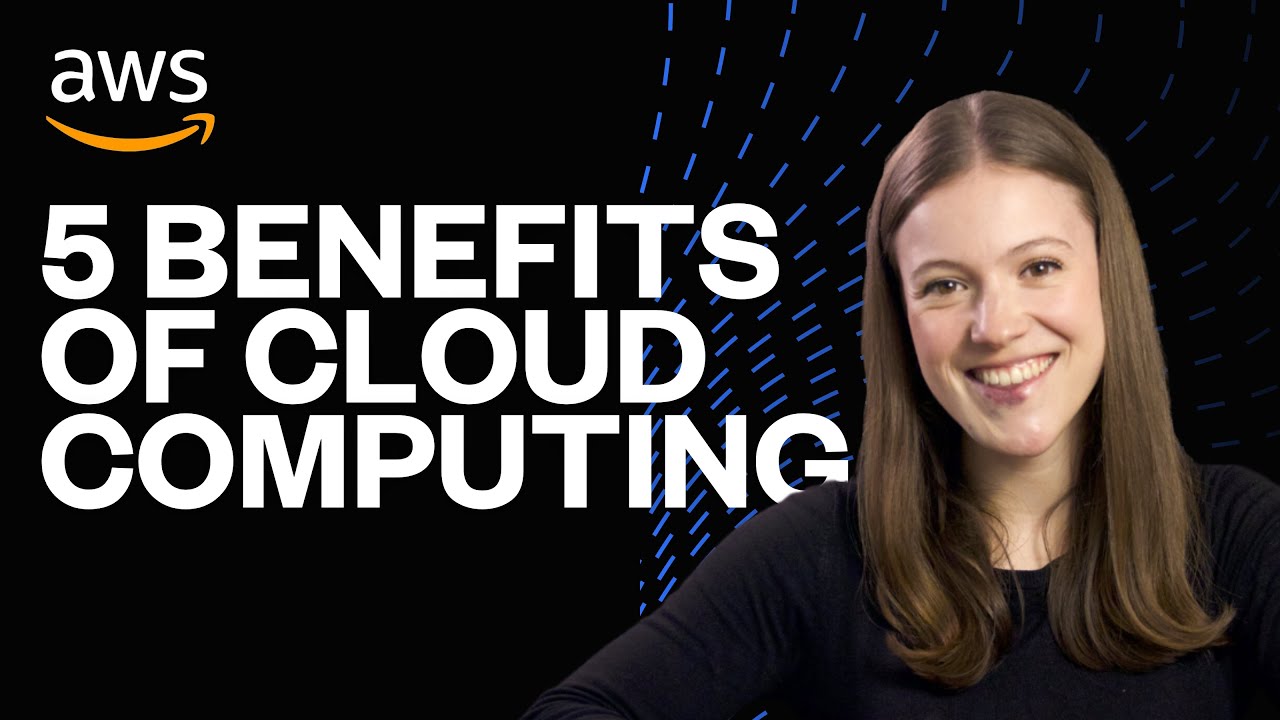benefits of cloud computing
Summary
TLDRThis video explores the benefits of cloud computing for businesses, highlighting its cost-effectiveness through a consumption-based pricing model that eliminates upfront costs. It emphasizes scalability, allowing businesses to adjust resources based on demand seamlessly. The cloud ensures that systems are current and reliable, with automatic updates and robust data backup solutions. Security is a shared responsibility, with providers offering strong physical and digital measures to protect data. Ultimately, cloud computing empowers organizations to focus on their core activities while enhancing operational efficiency and flexibility.
Takeaways
- 😀 Cloud computing is ideal for startups and existing businesses looking to transition from on-premises infrastructure.
- 💰 It operates on a pay-as-you-use model, allowing companies to avoid upfront costs and only pay for what they use.
- 📈 Scalability is a key feature, enabling automatic resource allocation based on demand without the need for physical infrastructure changes.
- 🔄 Horizontal scaling involves adding more servers to manage increased traffic, while vertical scaling increases the resources of existing servers.
- 🛠️ Cloud providers handle software and hardware maintenance, ensuring users have access to the latest technologies without management burdens.
- 🔒 Data reliability is enhanced through built-in backups, disaster recovery, and fault tolerance, ensuring continuous service during failures.
- 🌍 Cloud providers have a global infrastructure, reducing latency and improving response times for users regardless of location.
- 🔐 Physical and digital security measures are implemented by cloud providers, but users must utilize provided tools to protect their resources.
- 📊 Consumption-based pricing aids in better cost prediction and budgeting for cloud services.
- 🚀 Overall, cloud computing allows businesses to focus more on innovation and core operations rather than infrastructure management.
Q & A
What is cloud computing?
-Cloud computing is the delivery of computing services over the internet, allowing users to access and manage resources like storage, processing power, and applications without the need for physical hardware on-premises.
Who are the primary users of cloud computing?
-The primary users of cloud computing are new companies or startups with no existing infrastructure, and established businesses seeking to gradually transition from on-premise systems to the cloud.
What is a key financial benefit of cloud computing?
-A key financial benefit of cloud computing is the consumption-based pricing model, which allows businesses to pay only for the resources they use, avoiding upfront costs and unnecessary expenses.
How does scalability in cloud computing work?
-Cloud computing offers scalability by allowing businesses to easily increase or decrease resources based on demand. This elasticity is crucial during peak traffic periods, like sales events, where additional resources can be provisioned automatically.
What is the difference between horizontal and vertical scaling?
-Horizontal scaling involves adding more servers to manage increased load, while vertical scaling means upgrading existing servers with more resources, such as RAM.
How does cloud computing help in maintaining up-to-date technology?
-Cloud providers manage software and hardware updates automatically, relieving businesses from the burdens of maintenance and allowing them to focus on core activities.
What reliability features does cloud computing offer?
-Cloud computing provides reliability through data backups, disaster recovery, and fault tolerance, ensuring that data is secure and accessible even in the event of failures.
Why is geographical distribution important in cloud computing?
-Geographical distribution is important because it allows cloud providers to offer redundancy and minimize latency, ensuring optimal performance and response times for users regardless of their location.
What security measures do cloud providers implement?
-Cloud providers implement both physical security measures, such as surveillance and restricted access, and digital security tools, like encryption and multi-factor authentication, to protect data and resources.
What is the shared responsibility model in cloud security?
-The shared responsibility model means that while cloud providers secure the infrastructure, users are responsible for using the security tools provided to protect their own data and applications.
Outlines

此内容仅限付费用户访问。 请升级后访问。
立即升级Mindmap

此内容仅限付费用户访问。 请升级后访问。
立即升级Keywords

此内容仅限付费用户访问。 请升级后访问。
立即升级Highlights

此内容仅限付费用户访问。 请升级后访问。
立即升级Transcripts

此内容仅限付费用户访问。 请升级后访问。
立即升级浏览更多相关视频

Identify the Benefits of Cloud Computing - AZ-900 Certification Course

What is Cloud Computing?

AZ-900 Episode 4 | Consumption-based Model | Microsoft Azure Fundamentals Course

What is Cloud Computing with Amazon Web Services

The 5 Benefits of Cloud Computing Explained in 3 Minutes

What is Cloud Computing? | Amazon Web Services
5.0 / 5 (0 votes)
